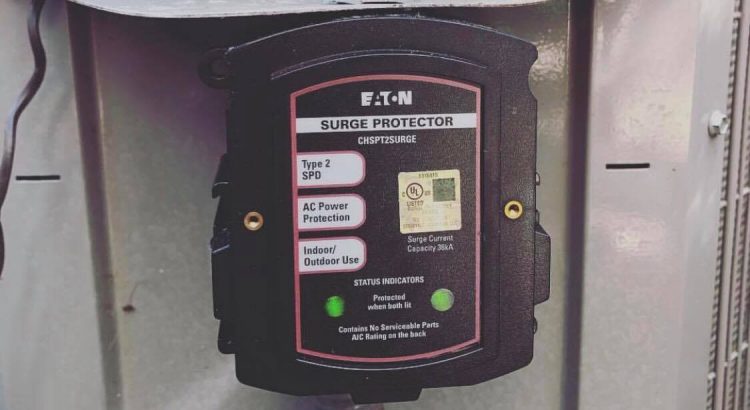Today’s homes are filled with sensitive, sophisticated electrical appliances that may take commands from phone apps and voice-activated devices. But they can’t yet ward off increasingly unpredictable weather.
Bad storms bring powerful lightning and hurricane-force winds that cause an increase in power surges that shut off lights, stop refrigerators, and in worst cases, overheat and fry appliances. Replacing equipment can become costly.
Plugging electronic devices into surge protector strips may help. But connecting every device throughout an entire house to surge protector strips isn’t always practical.
The National Electrical Code, which is updated every three years to keep pace with changing technology, recently was updated to its 2020 edition. Sponsored and published by the National Fire Protection Association in Quincy, Mass., the revised edition contains a new requirement for whole-house surge protection in new homes. The new rule also applies to existing homes when the service panel is updated. The goal is to protect appliances, computers, and other electronic equipment from electrical surges, says Jeff Sargent, principal electrical specialist at the NFPA.
Since the 2020 code has yet to be adopted by any government entity, the recommendation for whole-house surge protection is currently not required under law. The decision to install whole-house surge protection is advisory, Sargent says. However, builders of new homes and owners of existing homes may decide to add a system simply to protect their investment. Whole-house surge protection systems could become a state-by-state requirement when building code departments adopt the 2020 NEC. Each state has the power to make that decision according to its code adoption cycle, which varies, Sargent says.
Because these systems are expected to give homeowners peace of mind in protecting their assets, real estate professionals may want to inform clients of the option now, Sargent says. Here’s more to share:
Learn your state’s adoption cycle. Visit the NFPA website's adoption page, which lists each state’s revision timetable.
Check with a local electrical contractor. Have a qualified electrician do the work. Most states require they be licensed or certified; always check your state or community’s regulations. That person should be able to provide code requirements where they work.
Consult a home insurance agent. Some policies may offer a price reduction for having surge protection systems, in the same way that some do for fire and burglar alarms. If not yet, keep checking, since such benefits may become available.
Buy the best system. If clients purchase surge protection devices that plug into wall outlets, advise them to make sure they bear the mark of a nationally recognized testing laboratory. The U.S. Department of Labor has a list of participating organizations. “Already, numerous counterfeits or untested devices are available in the marketplace,” Sargent says.
Consider this investment a selling feature. As states change their requirements and as more homeowners install whole-home protection systems, they may become a desired feature in the same way a new roof, energy-efficient furnace, or updated kitchen and bathrooms are. “They could make one house appeal more than another,” Sargent says.
Source: magazine.realtor













